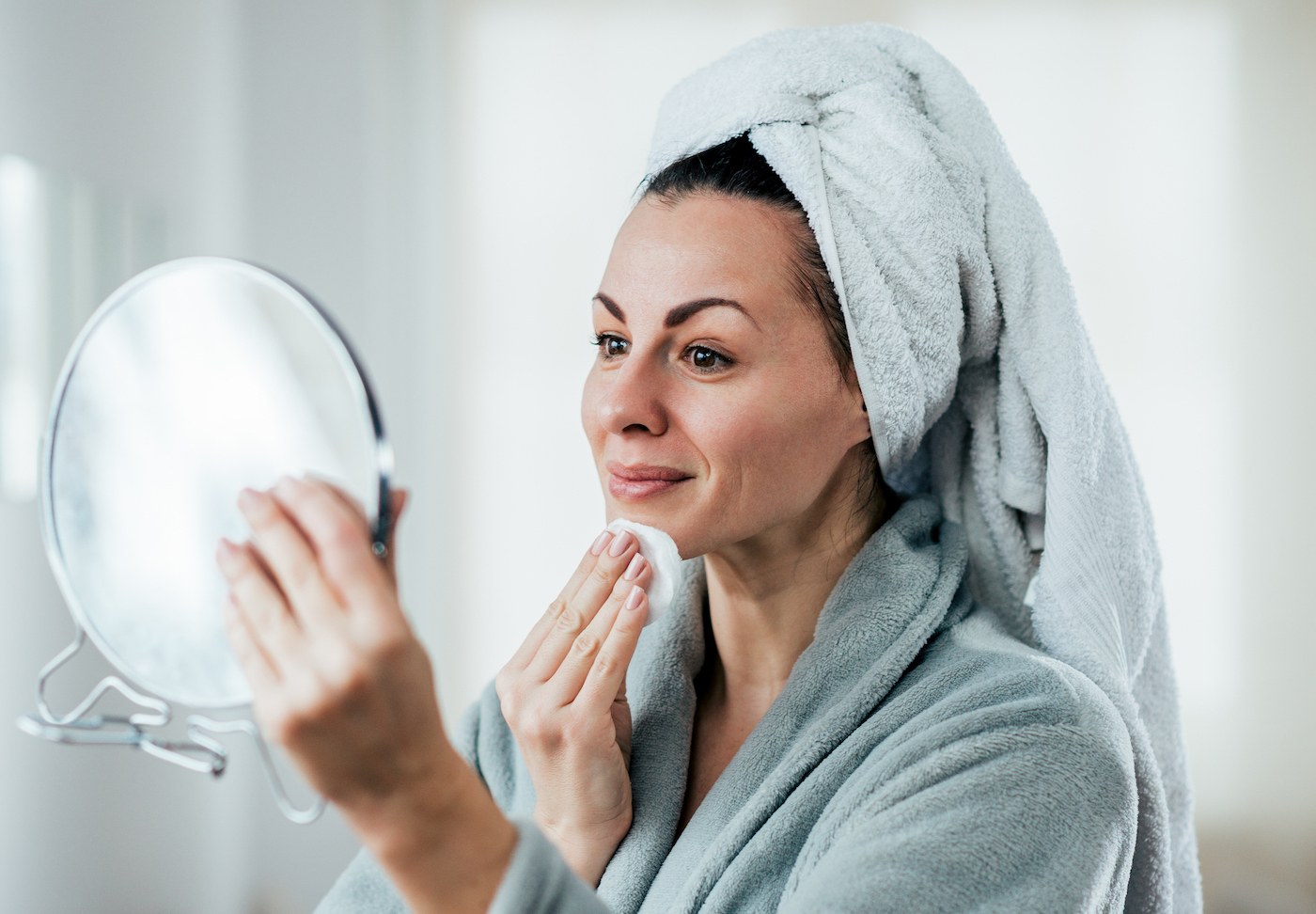
September 28, 2019 at 11:00PM by CWC
As the climate change discussion reaches a fever pitch, an awareness of changing temperatures, unpredictable environments, and survival instincts has become a constant in our lives—and promises to remain an important part of our future. In the beauty industry, this bent towards environmentalism is being reflected in organic farming, compostable packaging, non-toxic product recipes, and, as of late, a very clear uptick in ingredients harvested from plants that thrive in the harshest of conditions.
Super-natural brands like Ayond, which uses its signature botanical potion derived from Spanish desert flowers in its Rock Rose Face Serum ($140), or Kypris, which sources prickly pear seed oil from the Arizona desert for all of its beauty elixirs, have gained a cult following for their formulations. Even science-focused labels like Vitabrid C12, whose new Dual Drop Serum ($65) relies on the antioxidant properties of desert rose, and Acaderma, touts a barrier booster (aptly named The Oasis, $68) that’s infused with kinkeliba from Africa’s sub-Saharan region, are tapping the trend.
With bottles filled to the brim with functional botanicals, the prowess of desert plants brings up some interesting questions. Are the survival instincts of plants translating to our complexions? Can the same intelligence that allows a botanical to thrive with, say, very little water, help our own skin adapt to dehydration, pollution, or even stress? We collected research from founders, dermatologists, and facial plastic surgeons for their take on the rising concept.
There’s comfort in cacti
The theory goes something like this: If plants from the desert can withstand tumultuous climatic events, they can also help your skin to adapt to whatever is happening around it. Because they’re “coming from a climate where plants need to constantly protect themselves from dryness and sun damage, it makes sense that these plants produce oils that are also beneficial to our personal use,” says Julia Dalton-Brush, a trained makeup artist and founder of B3: Brush Beauty Balm, which sources prickly pear cactus for its ultra-hydrating Astraea Facial Oil ($35). According to her, the ingredient is packed with vitamins E and K, which can help fend off free radicals that are looking to deteriorate collagen and create damage within your complexion.
ADVERTISEMENT
ADVERTISEMENTKate Spade Autumn/Winter Sale |
Doctors say this logic holds water. “Cacti survive in the harshest desert climate. Because of that, they have hydrating properties that can be useful for the skin,” notes Washington DC-based facial plastic surgeon Michael Somenk, MD. “High levels of vitamin E and essential fatty acids like flavonoids not only keep cacti hydrated—they have the same cooling and moisturizing effect on skin.”
Take prickly pear, specifically—an obvious serum-formulation favorite spotlighted again in Primally Pure Plumping Serum ($52), and Cara Lista Berber Hydrating Serum ($88)—which has skin-enhancing benefits that are well-known in the medical space. “Prickly pear contains linoleic acid, which not only nourishes skin but also eliminates dullness,” says NYC-based facial plastic surgeon, Yael Halaas, MD, adding that it has great inflammation-fighting capabilities as well as antioxidant properties. Shockingly, both Dr. Halaas and Dr. Somenk agree that the high levels of Vitamin K in prickly pear can even lighten dark circles (though we’ll believe it when we see it!).
Now that experts and consumers are waking up to the soothing effects these spiky ingredients have on the skin, it’s no wonder that brands are quicker than ever to add plant names directly to labels (think: Boscia Cactus Water Moisturizer, $38, and the dreamy Make Beauty Succulent Mist, $25).
The neem tree from India, which can survive on just a trickle of water, could provide relief for those suffering from breakouts. “Neem [oil] is a strong anti-acne agent, helping to control the bacterial triggers of pustular acne,” says Tanuj Nakra, cosmetic surgeon and co-founder of the brand Avya. It’s this ability to combat bacteria and fungi that has made neem oil an Ayurvedic mainstay for generations; and today, its acne-soothing qualities are given new direction in Avya’s Gentle Cleanser ($40) and Sundari Neem Night Creame ($64).
The future of stress management
“Autophagy” (which is possibly the buzziest new technology in the skin-care space) is yet another science-backed process supported by resurrection plants. Autophagy is the cellular process of cleaning out old, used-up cells in the body, at every level, to make way for new and healthier ones in their place. The concept is taking hold in skin-care, where out-dated anti-aging theories on staving off cell maturation are making way for a new honing of our cellular processes.
“Our skin is no match for our environment, which is why it is so important to harness the power of natural actives to help repair and prevent damage,” says Naomi Whittel, founder of OMI Skin Nutrition. For her own line, Whittel looked to Southern Africa, where “plants are known for the speed in which dead leaves revive when the rains come.” It was there that they discovered myrothamnus flabellifolia extract, known to protect cell membrane structures from dehydration and skin lipids against oxidative stress.
Now a key component in the line’s cellular rejuvenation complex, Whittel’s signature recipe is designed to improve the skin’s ability to repair its own damage and has been clinically proven to activate autophagy. “Autophagy begins where antioxidants leave off,” Whittel explains. “While antioxidants help to prevent damage due to the accelerated and inevitable agers, autophagy does what antioxidants can’t—it acts to remove and repair the skin’s already damaged cellular components.” In some sense, the two work from opposite sides of the equation: Antioxidants guard and defend against future damage while autophagy activates on the back end to usher away previously damaged cells. Every product in OMI’s line is laced with myrothamnus flabellifolia extract, but Whittel recommends the Re-Energize collection for its ability to promote radiance and vitality.
As plants make it easier than ever to check off the basics like fighting acne and moisturizing, they’ve also revolutionized the future by offering up skin-reprogramming, brand-new science. It stands as proof that thousands of years of natural global evolution are flexing (and sharing) their valuable skills.
If you’re looking for beauty inspired from other natural ecosystems, here’s how one brand is tapping into the powers of the deep blue sea and this is the one product that dermatologists would bring with them to a desert island.
Author Arden Fanning Andrews | Well and Good
Selected by CWC
ADVERTISEMENT
ADVERTISEMENTUp to 30% off Gift Sets |






